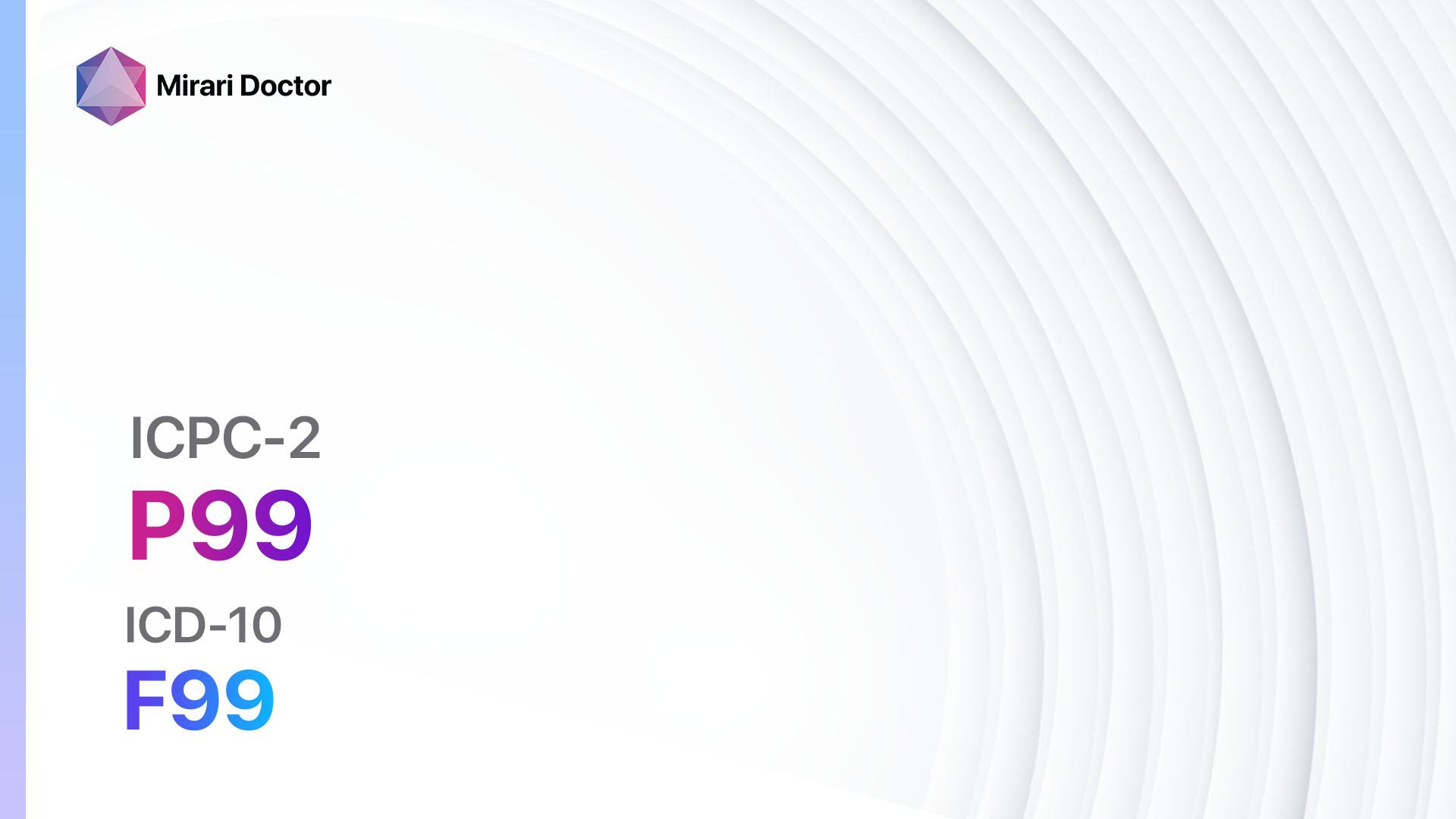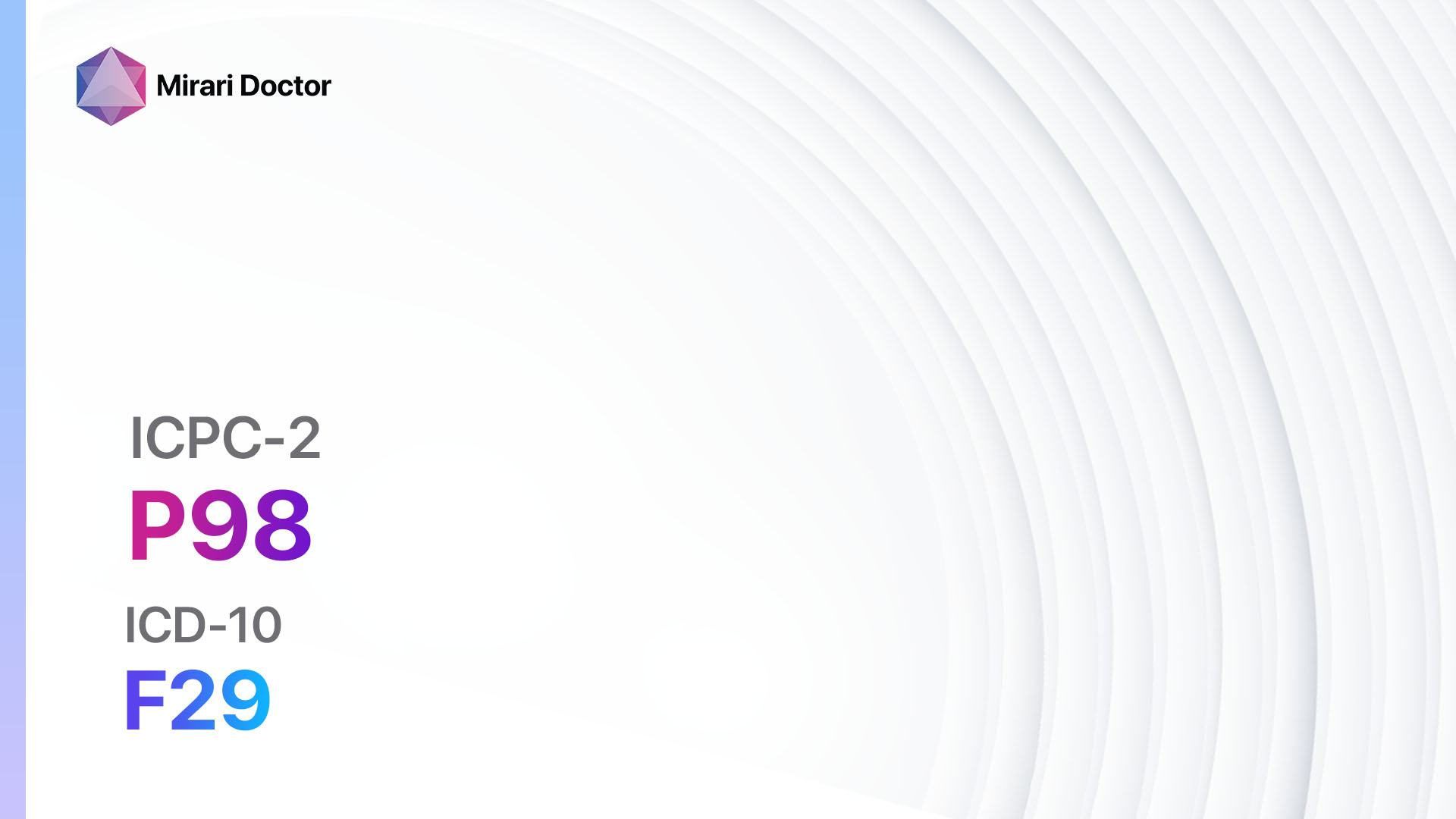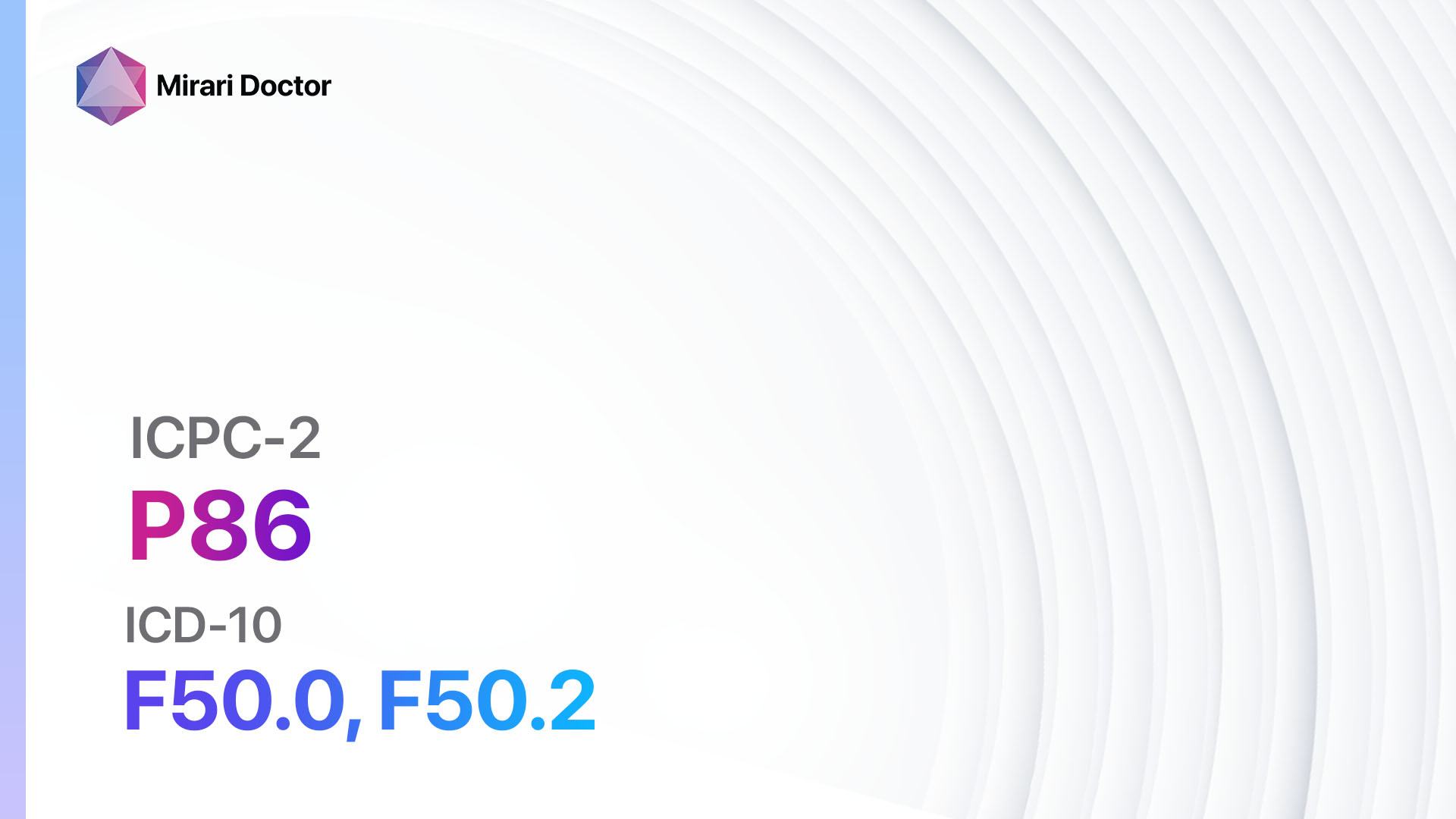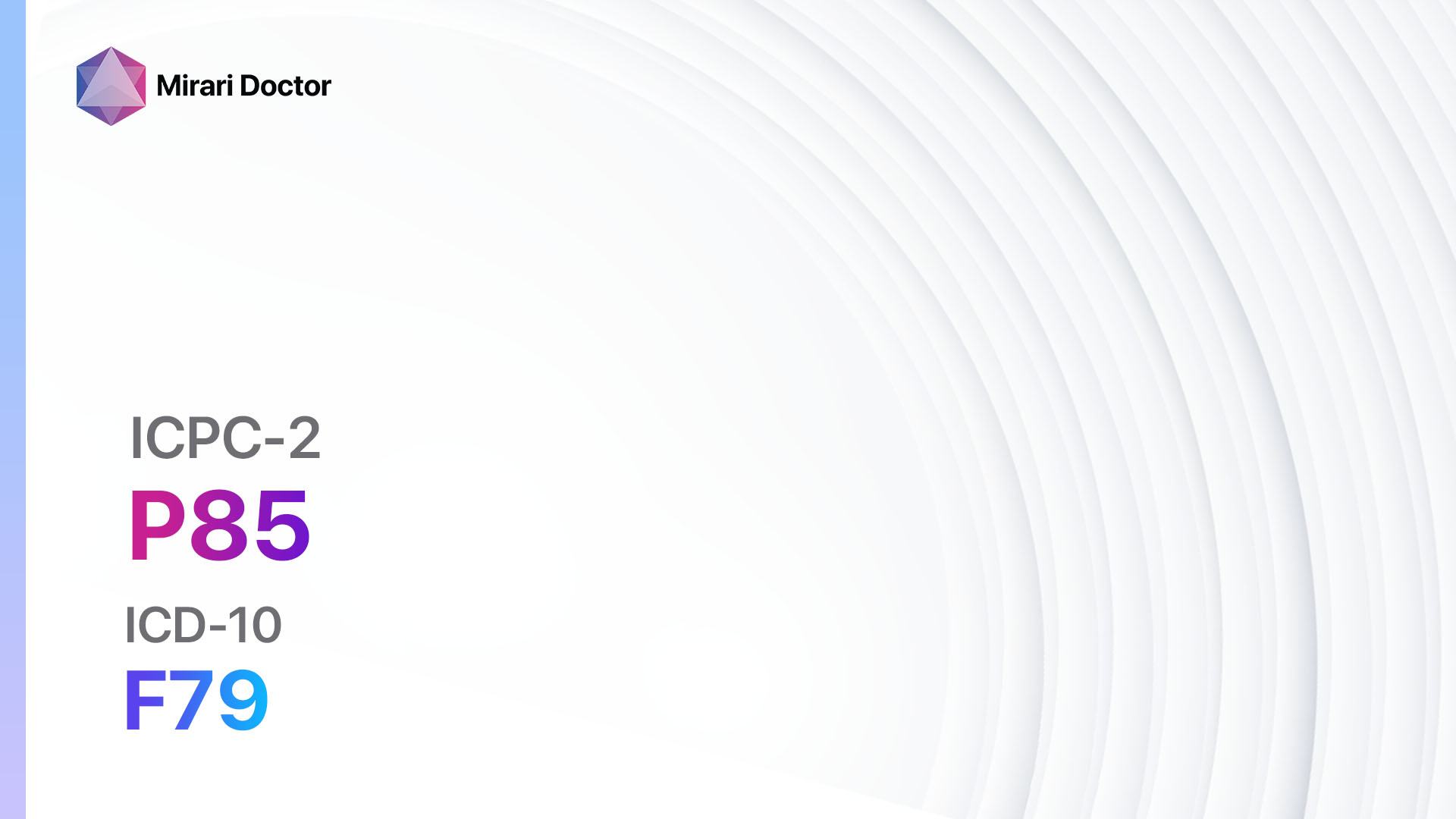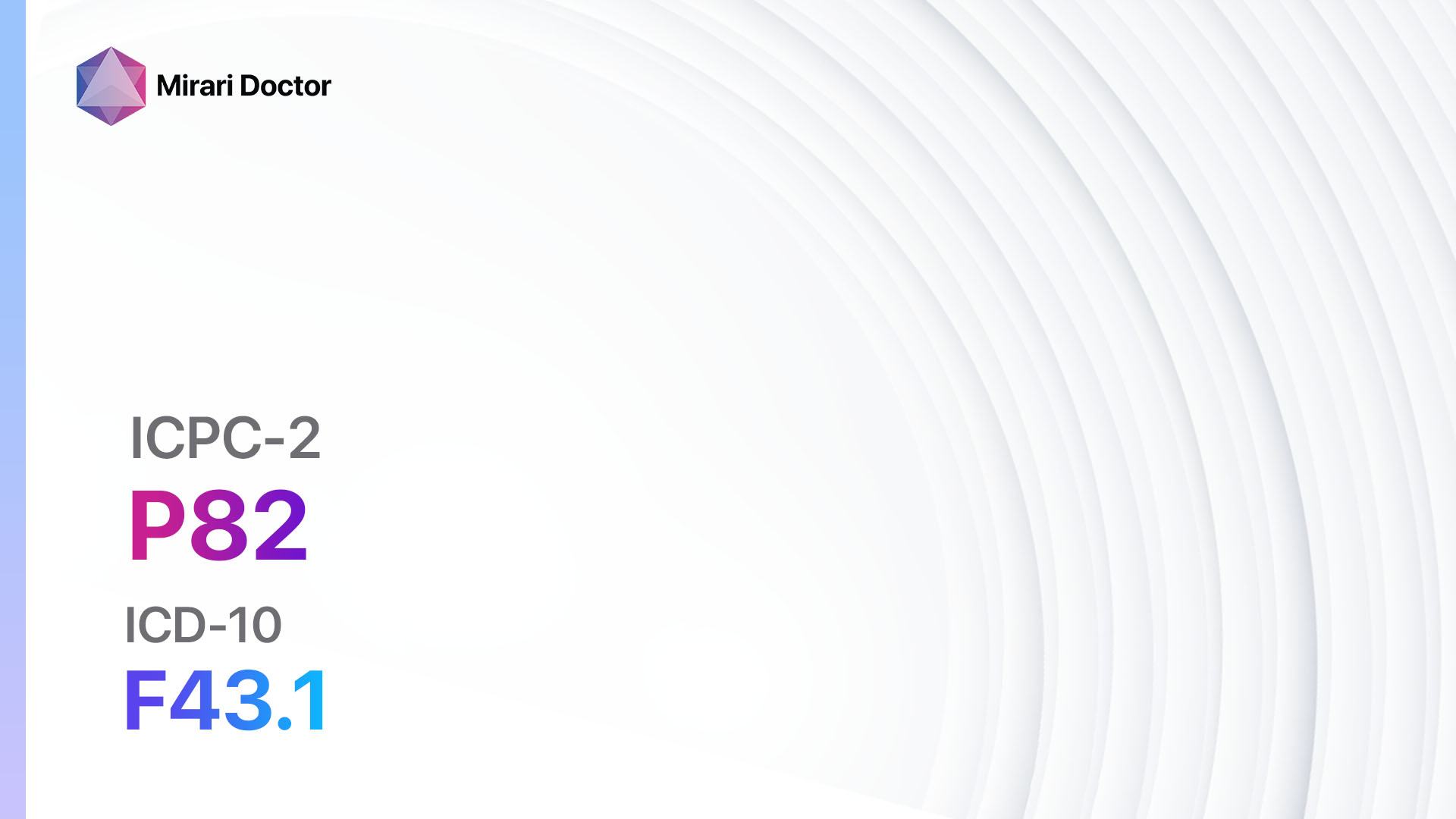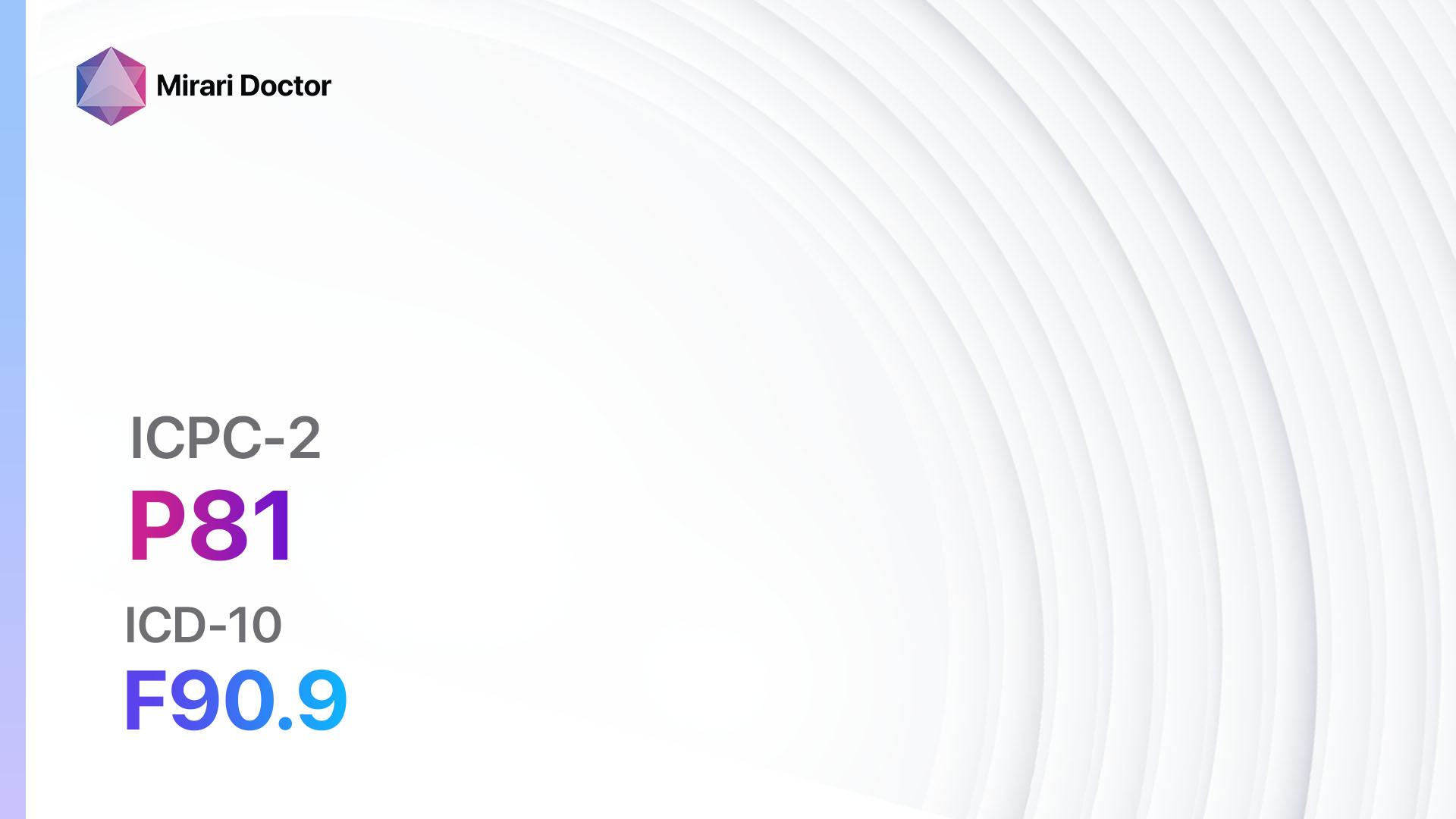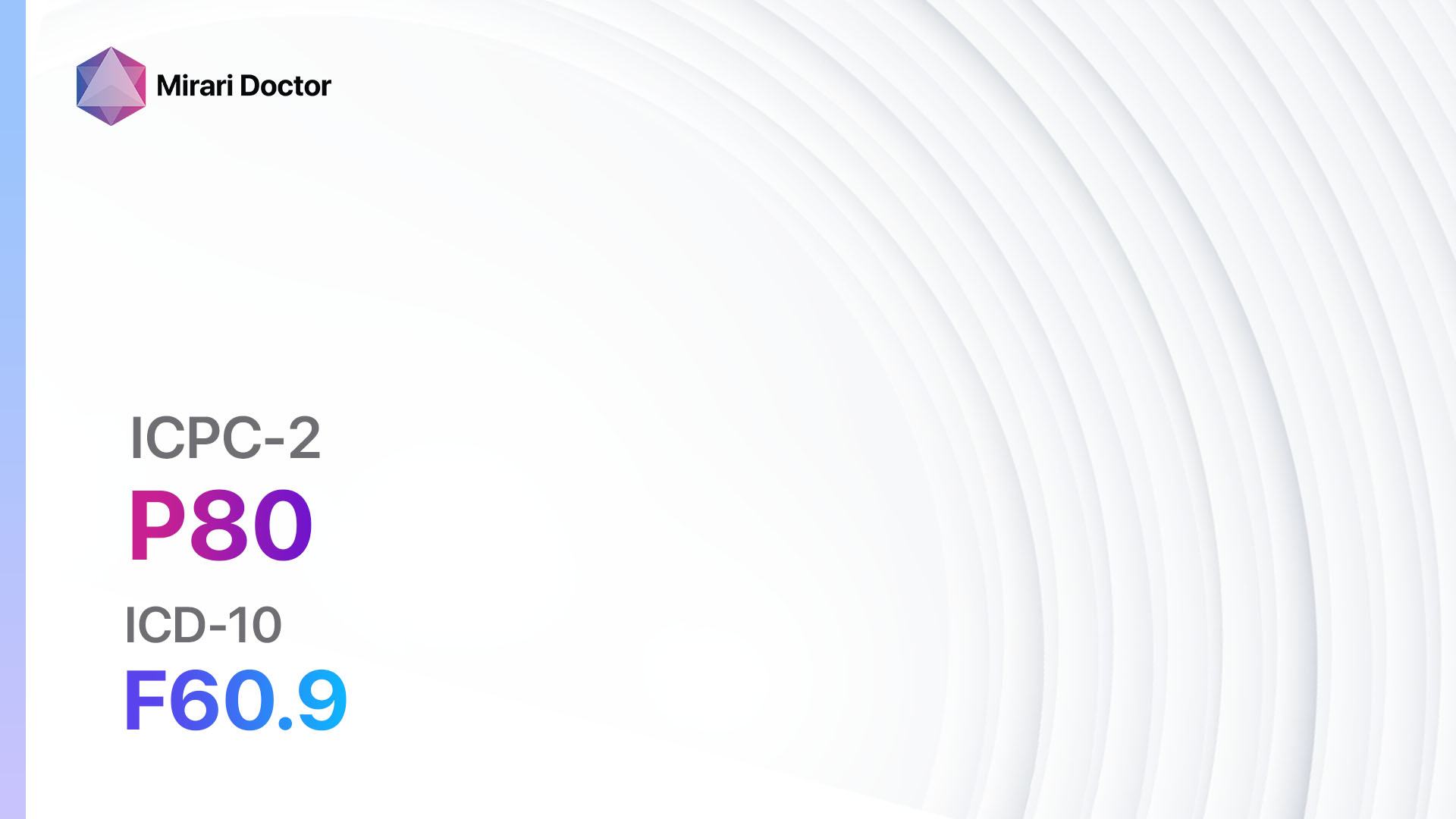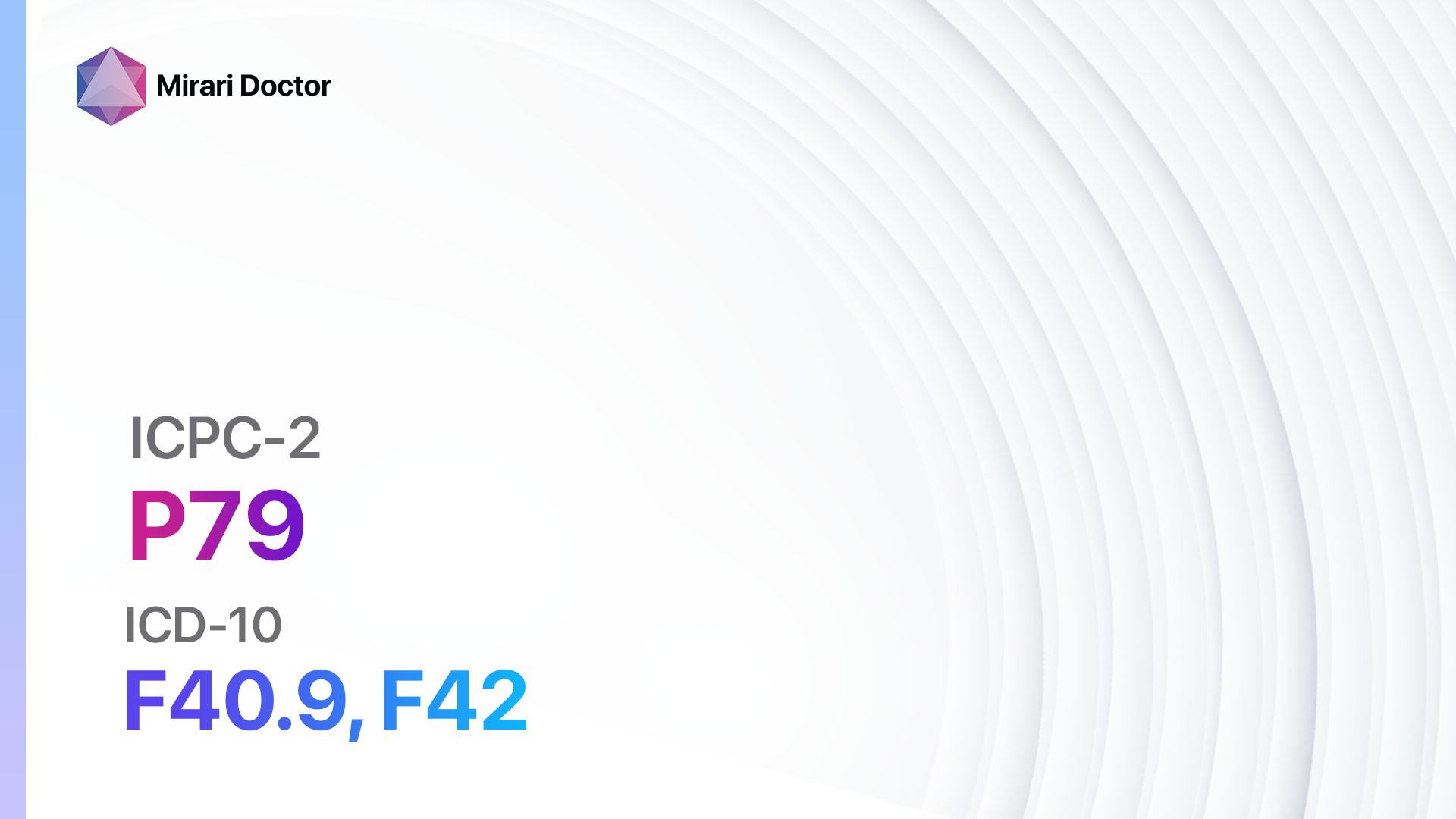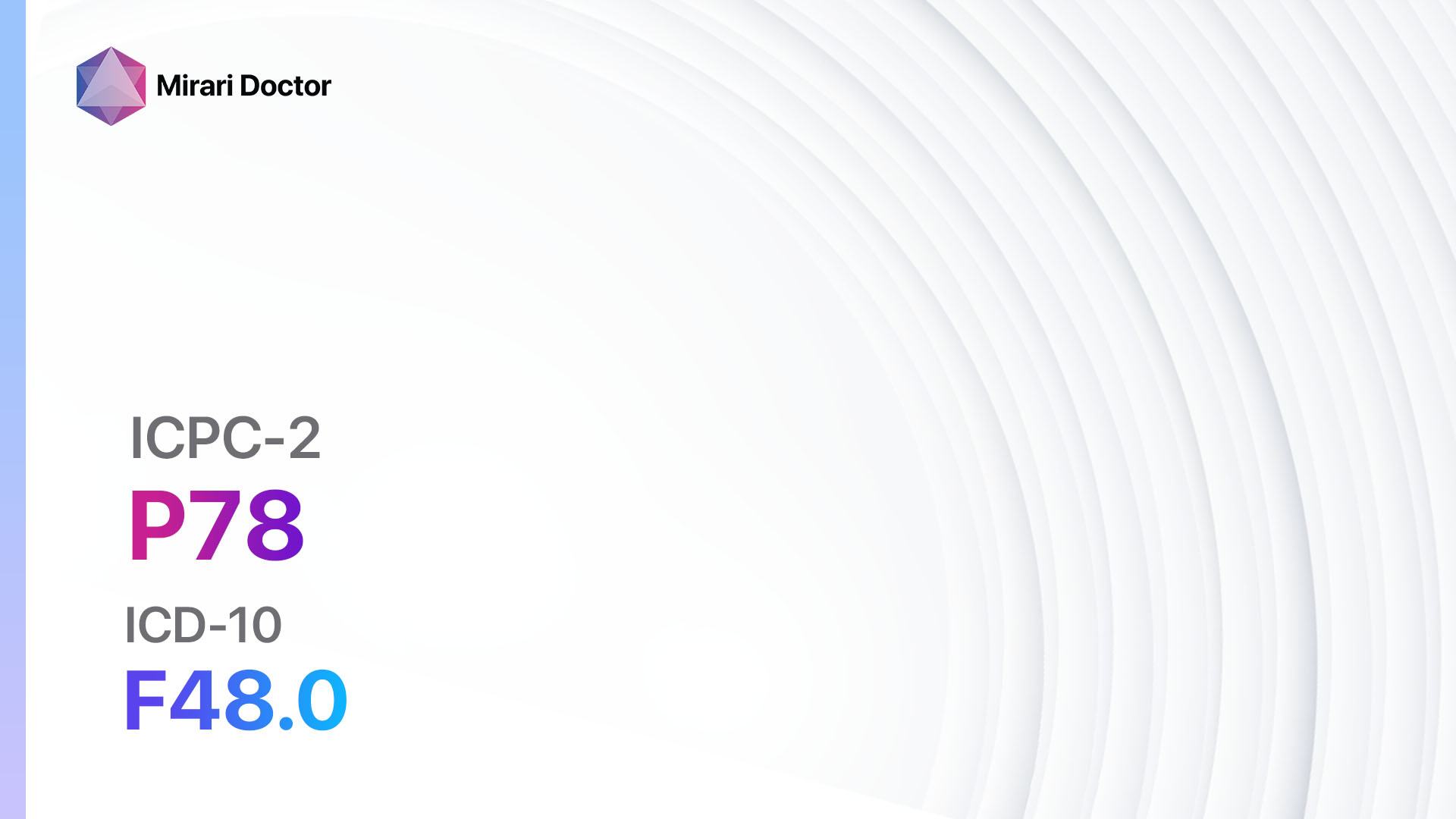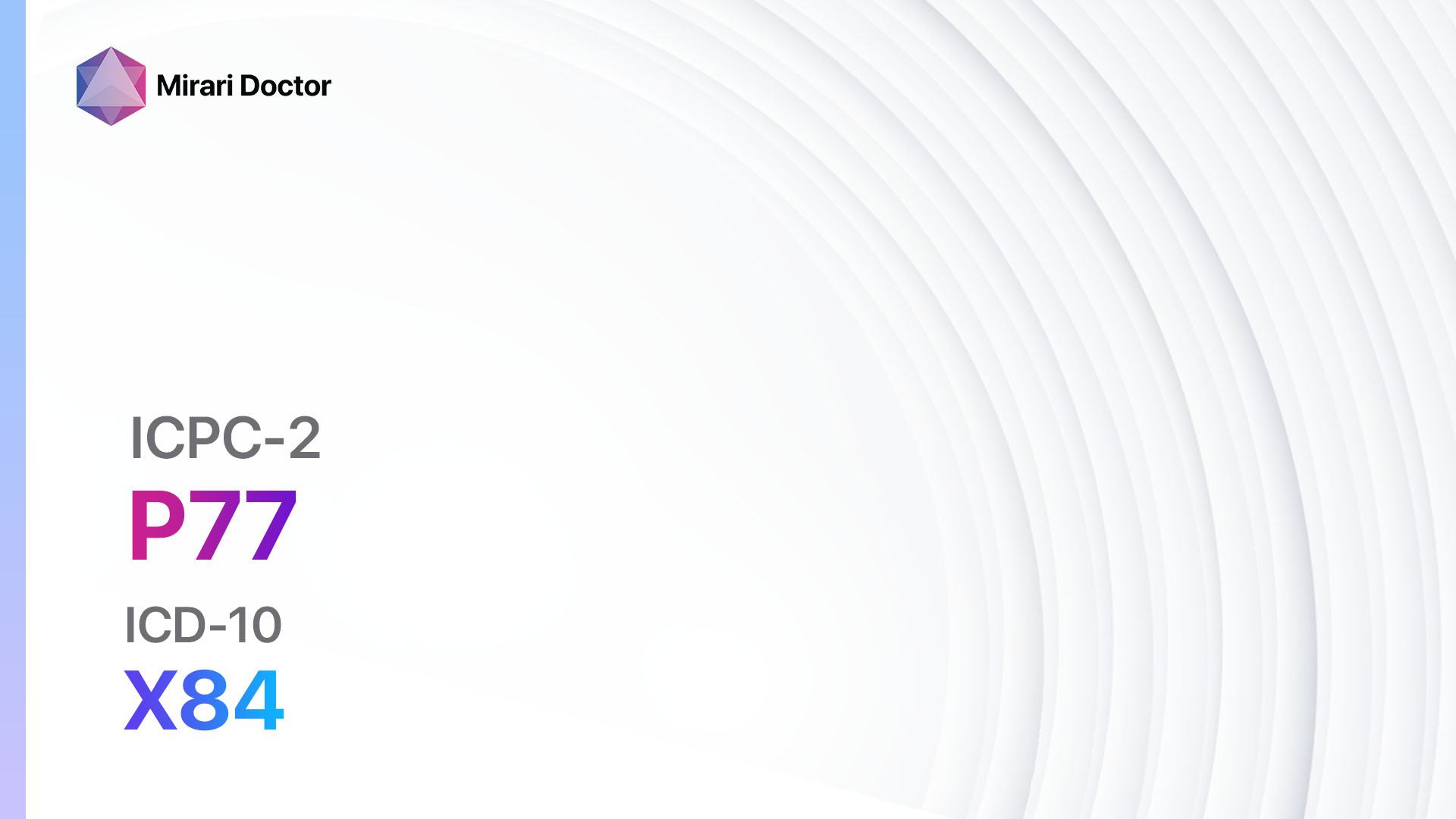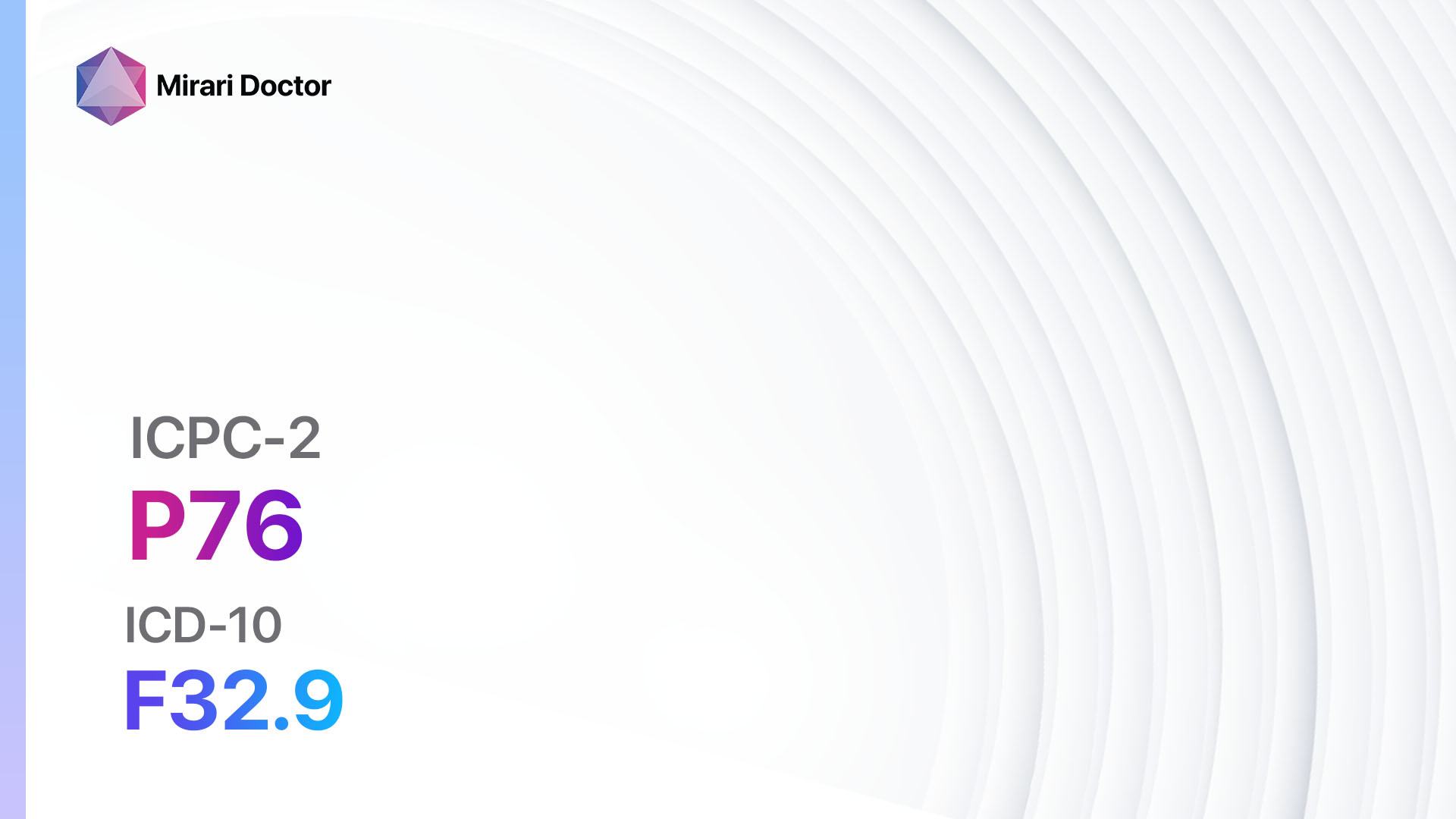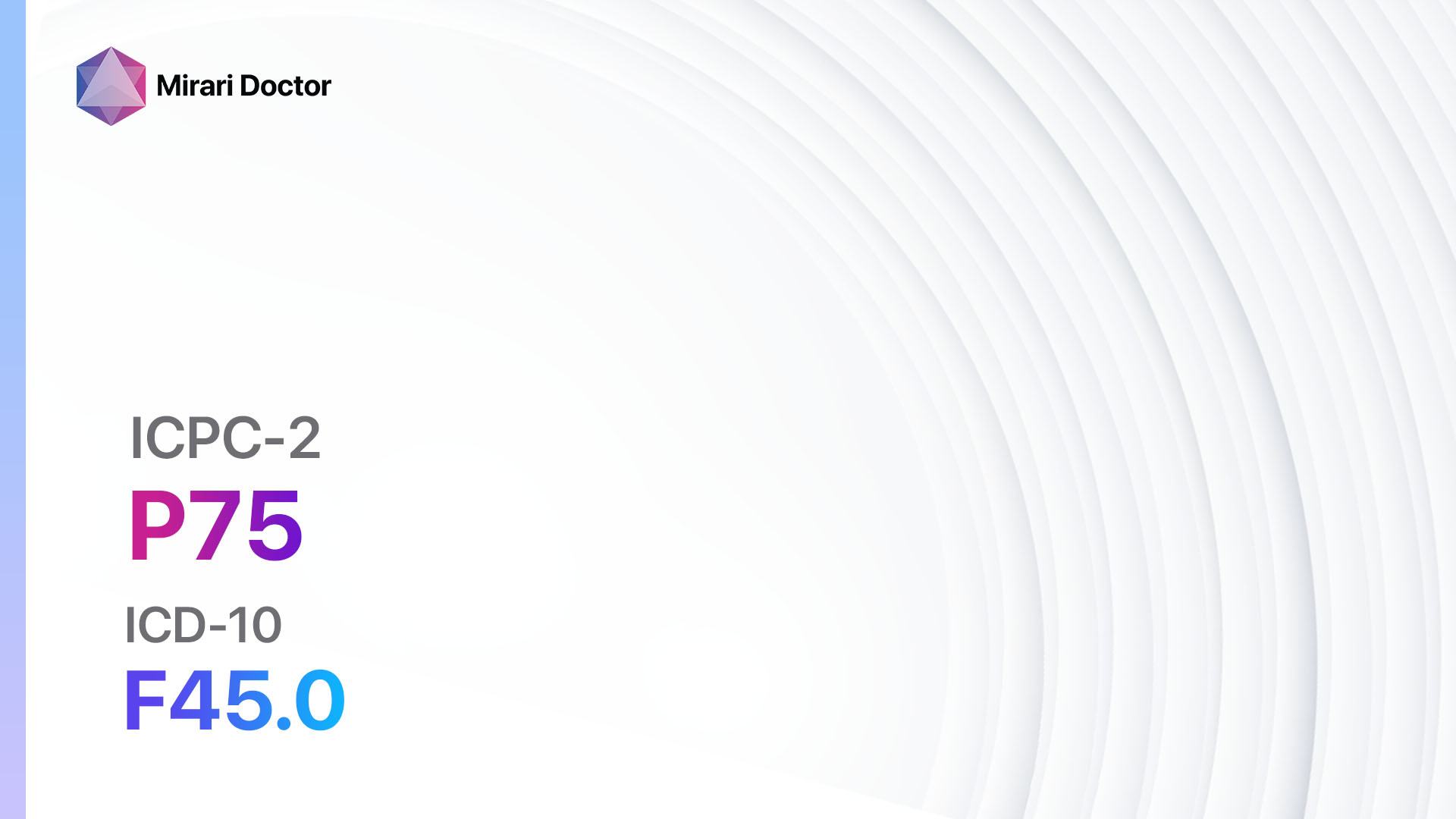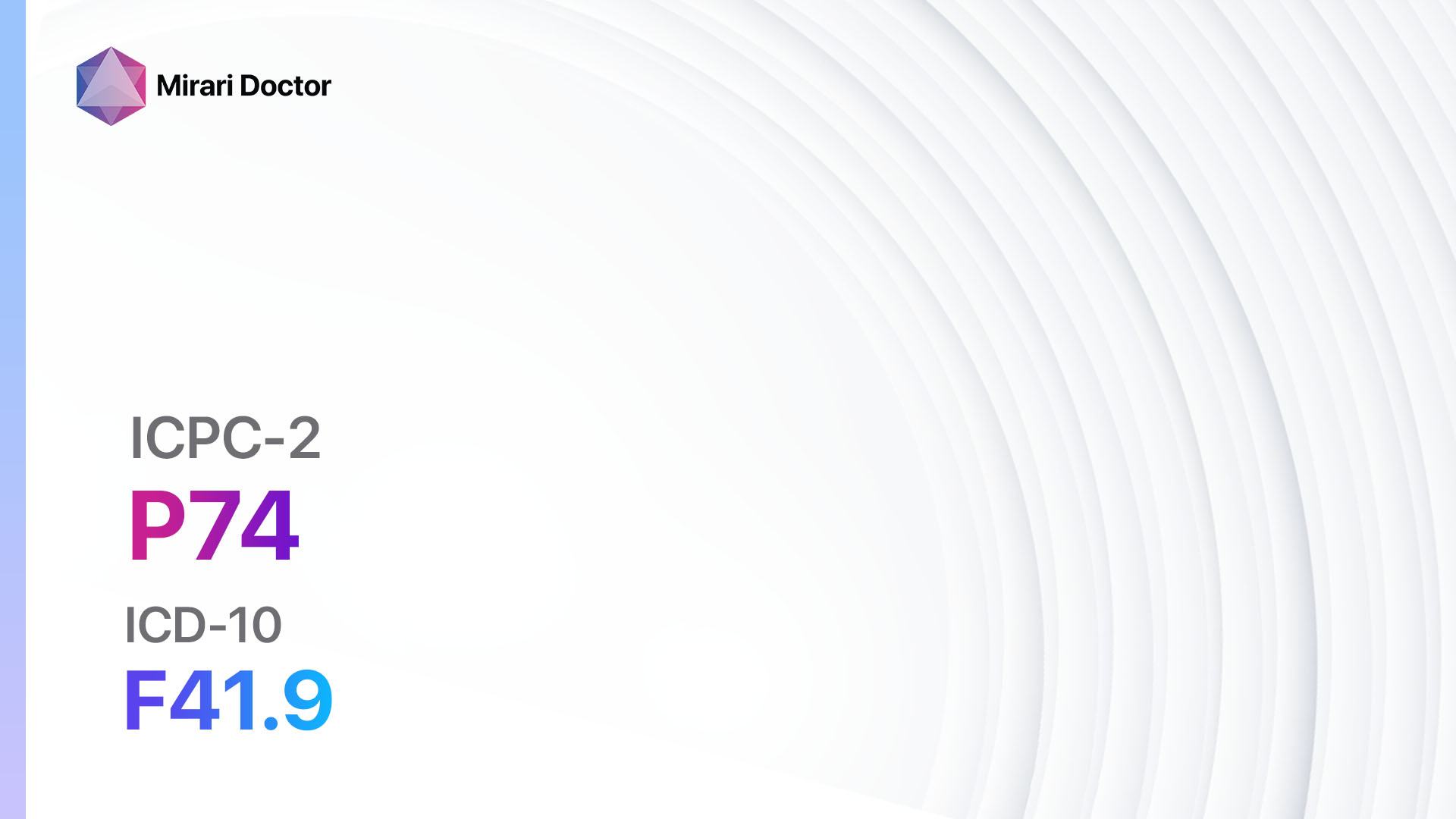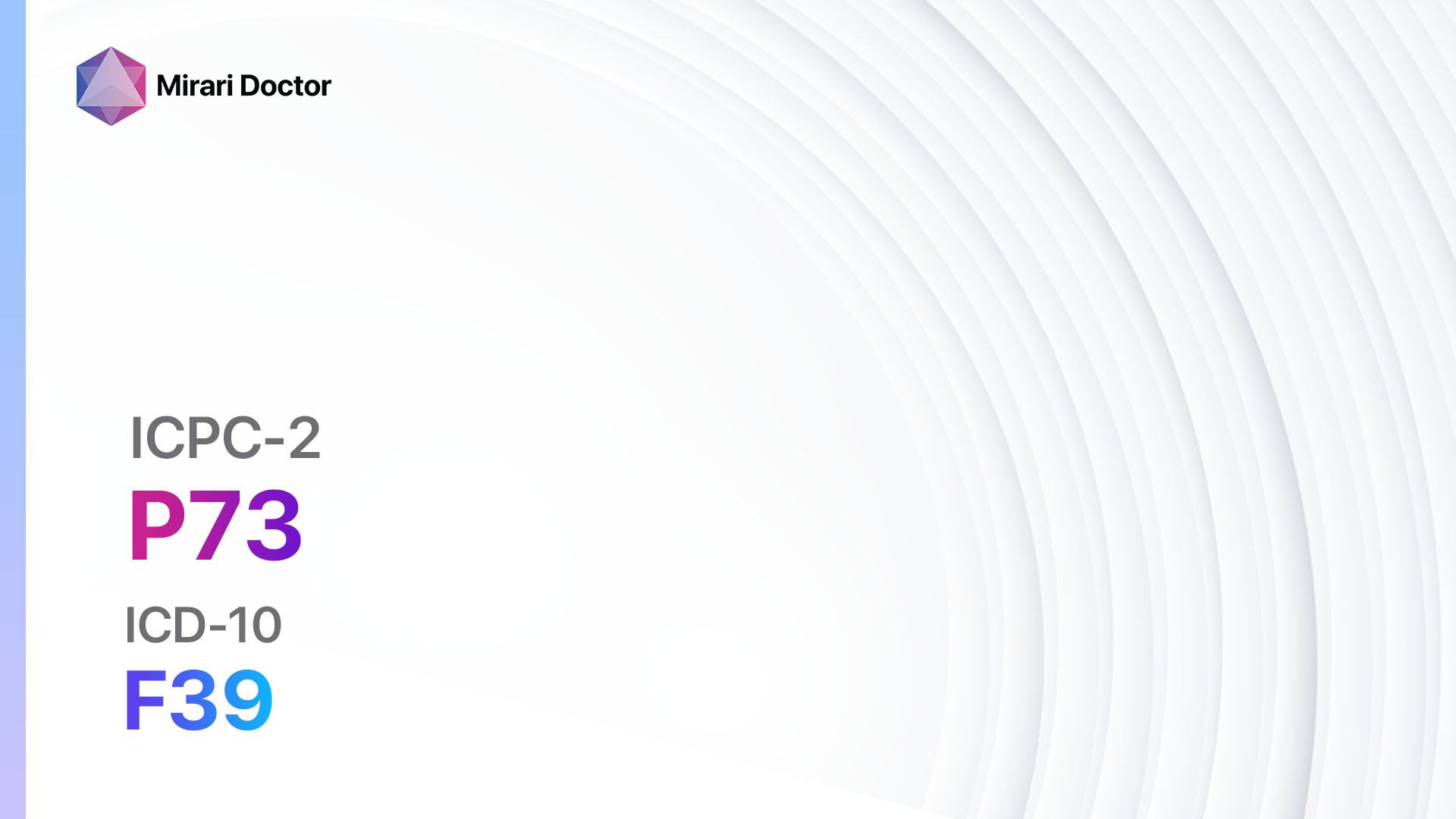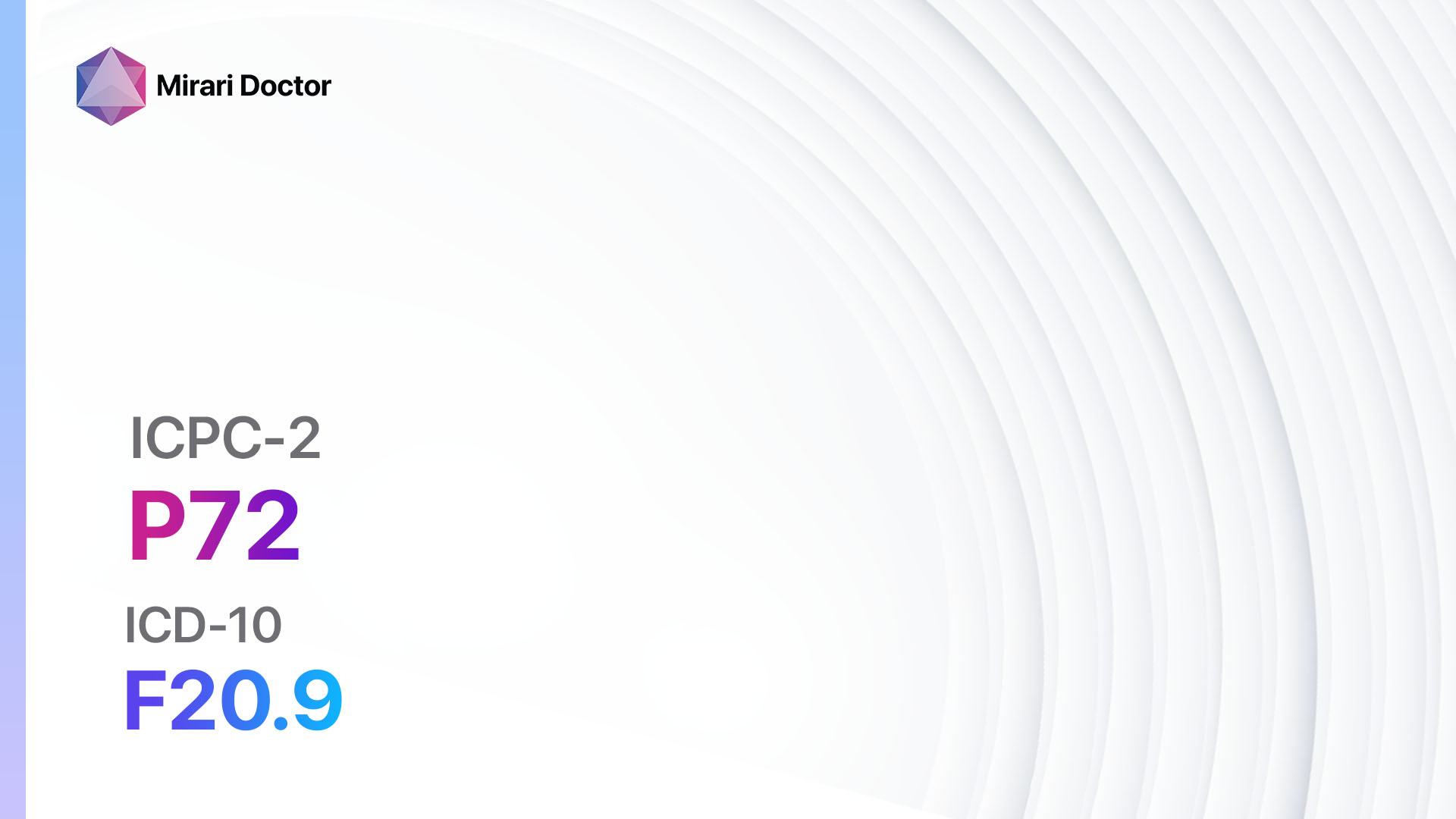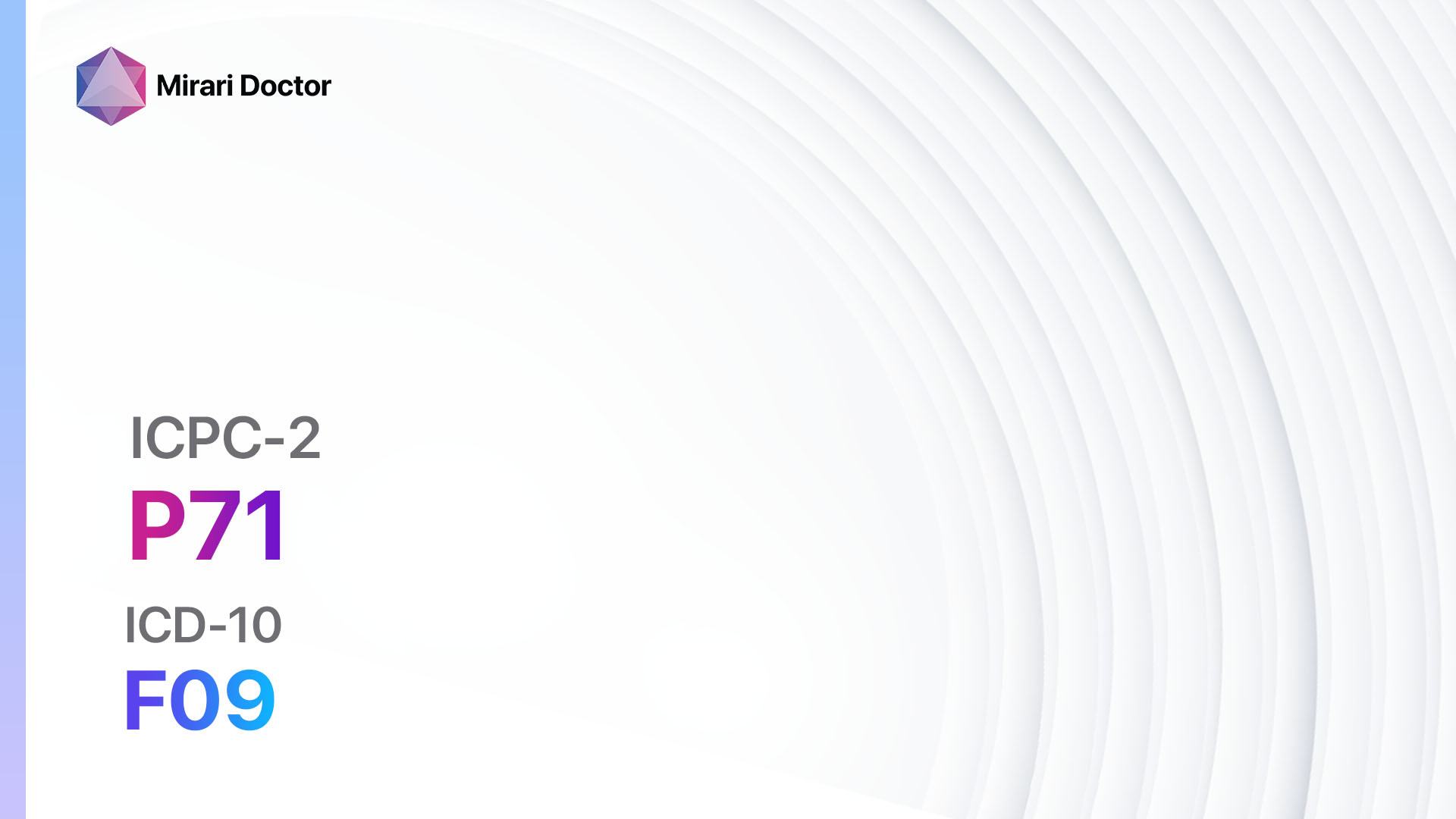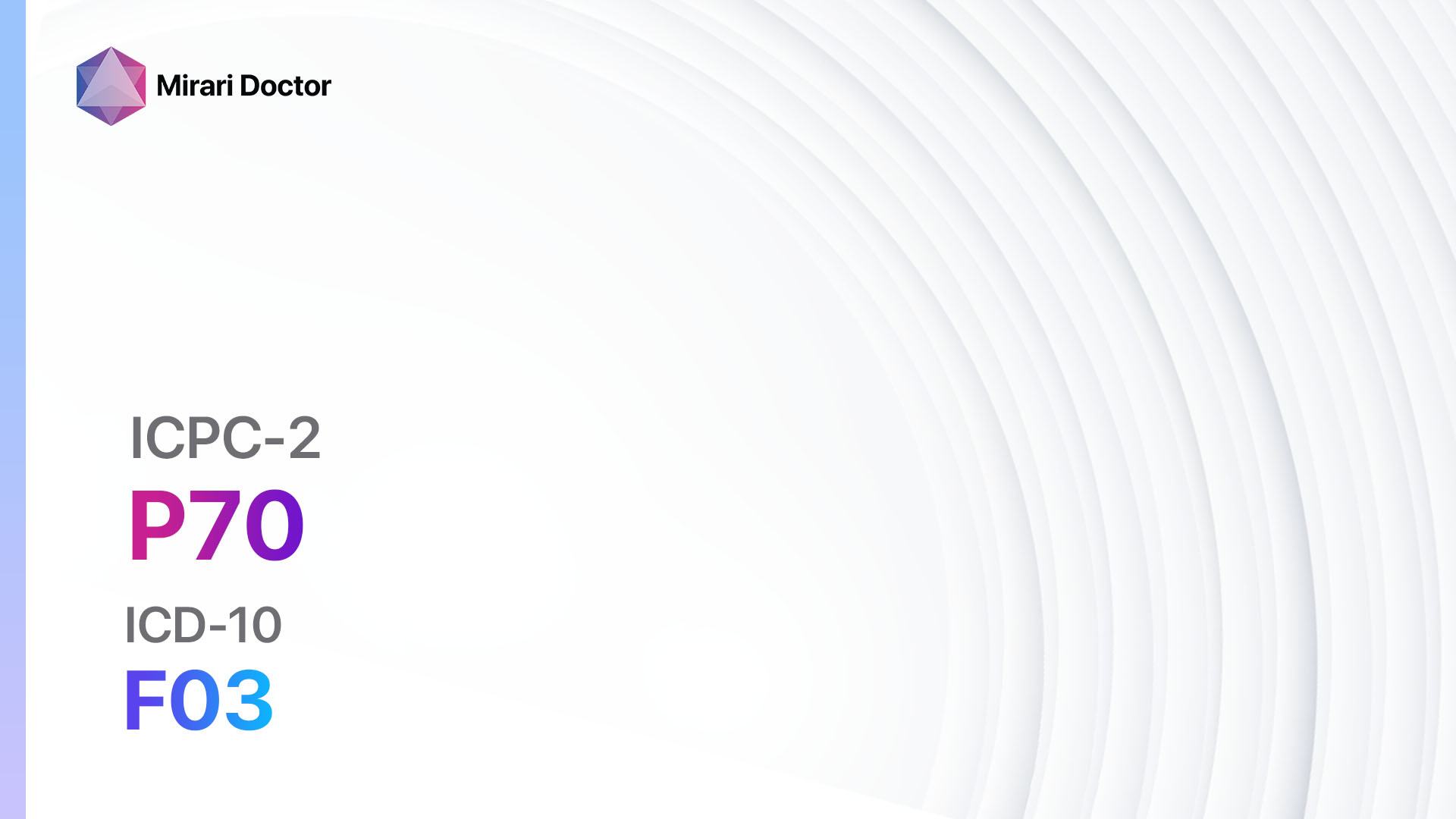
Introduction
Stammering, also known as stuttering, is a speech disorder characterized by disruptions in the normal flow of speech. It can manifest as repetitions, prolongations, or blocks of sounds, syllables, or words.[1] Tics, on the other hand, are sudden, repetitive, nonrhythmic movements or sounds that are difficult to control.[2] This guide aims to provide an overview of the symptoms, causes, diagnostic steps, possible interventions, and lifestyle modifications for stammering/stuttering/tic.
Codes
- ICPC-2 Code: P10 Stammering/stuttering/tic
- ICD-10 Code: F95.9 Tic disorder, unspecified
Symptoms
- Repetitions: Repeating sounds, syllables, or words.[3]
- Prolongations: Prolonging sounds or syllables.
- Blocks: Inability to produce sounds or words, often accompanied by tension or struggle.
- Tics: Sudden, repetitive movements or sounds that are difficult to control.[4]
Causes
- Genetic factors: Stammering/stuttering/tic can run in families, suggesting a genetic component.[5]
- Neurological factors: Differences in brain structure or function may contribute to the development of these conditions.[6]
- Environmental factors: Stress, trauma, or certain medications can trigger or worsen symptoms.[7]
Diagnostic Steps
Medical History
- Gather information about the onset, duration, and progression of symptoms.
- Identify any risk factors, such as a family history of stammering/stuttering/tic or exposure to traumatic events.
- Assess the impact of symptoms on daily life, including social interactions and academic/work performance.[8]
Physical Examination
- Conduct a thorough examination of the oral structures involved in speech production, such as the tongue, lips, and vocal cords.
- Evaluate for any signs of neurological conditions or other underlying medical conditions that may contribute to the symptoms.[9]
Laboratory Tests
- There are no specific laboratory tests for diagnosing stammering/stuttering/tic. However, certain tests may be ordered to rule out other medical conditions that can mimic these symptoms.
Diagnostic Imaging
- Diagnostic imaging, such as MRI or CT scans, is not typically necessary for the diagnosis of stammering/stuttering/tic. However, in some cases, imaging may be recommended to rule out structural abnormalities or neurological conditions.[10]
Other Tests
- Speech and language assessment: A speech-language pathologist may conduct various tests to evaluate the severity and impact of the symptoms.
- Psychological evaluation: A psychologist or psychiatrist may assess for any underlying psychological factors that may contribute to the symptoms.
Follow-up and Patient Education
- Provide ongoing support and counseling to the patient and their family.
- Educate the patient about the nature of stammering/stuttering/tic and available treatment options.
- Encourage the patient to join support groups or seek therapy to improve communication skills and cope with the condition.
Possible Interventions
Traditional Interventions
Medications:
Top 5 drugs for stammering/stuttering/tic:
- Selective serotonin reuptake inhibitors (SSRIs) (e.g., Fluoxetine, Sertraline):
- Cost: Generic versions can be $10-$50/month.
- Contraindications: Hypersensitivity to SSRIs, concurrent use of monoamine oxidase inhibitors (MAOIs).
- Side effects: Nausea, headache, insomnia.
- Severe side effects: Serotonin syndrome, suicidal thoughts.
- Drug interactions: MAOIs, other serotonergic drugs.
- Warning: Close monitoring for worsening of symptoms or emergence of suicidal thoughts.
- Antipsychotics (e.g., Haloperidol, Risperidone):
- Cost: Generic versions can be $10-$50/month.
- Contraindications: Hypersensitivity to antipsychotics, history of neuroleptic malignant syndrome.
- Side effects: Sedation, weight gain, extrapyramidal symptoms.
- Severe side effects: Tardive dyskinesia, neuroleptic malignant syndrome.
- Drug interactions: Other antipsychotics, drugs that prolong QT interval.
- Warning: Regular monitoring for side effects and efficacy.
- Benzodiazepines (e.g., Diazepam, Clonazepam):
- Cost: Generic versions can be $10-$50/month.
- Contraindications: Hypersensitivity to benzodiazepines, history of substance abuse.
- Side effects: Sedation, dizziness, cognitive impairment.
- Severe side effects: Respiratory depression, paradoxical reactions.
- Drug interactions: Other CNS depressants, drugs that inhibit CYP3A4.
- Warning: Risk of dependence and withdrawal symptoms.
- Beta-blockers (e.g., Propranolol, Atenolol):
- Cost: Generic versions can be $10-$30/month.
- Contraindications: Severe bradycardia, heart block, uncontrolled heart failure.
- Side effects: Fatigue, dizziness, bradycardia.
- Severe side effects: Bronchospasm, heart block.
- Drug interactions: Calcium channel blockers, insulin.
- Warning: Should not be abruptly stopped.
- Botulinum toxin injections (e.g., Botox):
- Cost: $500-$1500 per treatment session.
- Contraindications: Hypersensitivity to botulinum toxin, infection at the injection site.
- Side effects: Injection site pain, temporary weakness of nearby muscles.
- Severe side effects: Difficulty swallowing or breathing.
- Drug interactions: None.
- Warning: Effects are temporary and repeat injections may be required.
Alternative Drugs:
- Anticonvulsants (e.g., Carbamazepine, Gabapentin): May be used in certain cases to reduce tic frequency.
- Muscle relaxants (e.g., Baclofen, Tizanidine): Can help alleviate muscle tension associated with tics.
- NMDA receptor antagonists (e.g., Memantine): May have a modulating effect on tic symptoms.
Surgical Procedures:
- Deep brain stimulation (DBS): Involves implanting electrodes in specific brain regions to modulate abnormal neural activity. Cost: $50,000-$100,000.
- Thalamotomy: Surgical destruction of a small region in the thalamus to alleviate symptoms. Cost: $30,000-$60,000.
Alternative Interventions
- Speech therapy: Various techniques, such as breathing exercises, relaxation techniques, and speech modification strategies, can help improve speech fluency. Cost: $100-$200 per session.
- Behavioral therapy: Cognitive-behavioral therapy (CBT) or habit reversal training (HRT) can help individuals gain control over tics and reduce their frequency. Cost: $100-$200 per session.
- Biofeedback: Involves using electronic devices to provide feedback on physiological processes, such as muscle tension, to help individuals learn to control their symptoms. Cost: $100-$200 per session.
- Acupuncture: May help improve speech fluency and reduce muscle tension. Cost: $60-$120 per session.
- Hypnotherapy: Hypnosis techniques can be used to reduce anxiety and improve speech fluency. Cost: $100-$200 per session.
Lifestyle Interventions
- Relaxation techniques: Deep breathing exercises, meditation, and progressive muscle relaxation can help reduce anxiety and improve speech fluency. Cost: Free.
- Exercise: Regular physical activity can help reduce stress and improve overall well-being. Cost: Varies (e.g., gym membership, equipment).
- Avoiding triggers: Identifying and avoiding situations or stimuli that worsen symptoms can help manage stammering/stuttering/tic. Cost: Free.
- Support groups: Joining support groups or seeking peer support can provide emotional support and practical tips for managing symptoms. Cost: Free or minimal membership fees.
- Speech apps: Utilizing speech therapy apps or online programs can supplement traditional therapy and provide additional practice opportunities. Cost: Varies (some apps may be free, while others may require a purchase).
It is important to note that the cost ranges provided are approximate and may vary depending on the location and availability of the interventions.
Mirari Cold Plasma Alternative Intervention
Understanding Mirari Cold Plasma
- Safe and Non-Invasive Treatment: Mirari Cold Plasma is a safe and non-invasive treatment option for various skin conditions. It does not require incisions, minimizing the risk of scarring, bleeding, or tissue damage.
- Efficient Extraction of Foreign Bodies: Mirari Cold Plasma facilitates the removal of foreign bodies from the skin by degrading and dissociating organic matter, allowing easier access and extraction.
- Pain Reduction and Comfort: Mirari Cold Plasma has a local analgesic effect, providing pain relief during the treatment, making it more comfortable for the patient.
- Reduced Risk of Infection: Mirari Cold Plasma has antimicrobial properties, effectively killing bacteria and reducing the risk of infection.
- Accelerated Healing and Minimal Scarring: Mirari Cold Plasma stimulates wound healing and tissue regeneration, reducing healing time and minimizing the formation of scars.
Mirari Cold Plasma Prescription
Video instructions for using Mirari Cold Plasma Device – P10 Stammering/stuttering/tic (ICD-10:F95.9)
| Mild | Moderate | Severe |
| Mode setting: 2 (Wound Healing) Location: 7 (Neuro system & ENT) Morning: 15 minutes, Evening: 15 minutes |
Mode setting: 2 (Wound Healing) Location: 7 (Neuro system & ENT) Morning: 30 minutes, Lunch: 30 minutes, Evening: 30 minutes |
Mode setting: 2 (Wound Healing) Location: 7 (Neuro system & ENT) Morning: 30 minutes, Lunch: 30 minutes, Evening: 30 minutes |
| Mode setting: 7 (Immunotherapy) Location: 1 (Sacrum) Morning: 15 minutes, Evening: 15 minutes |
Mode setting: 7 (Immunotherapy) Location: 1 (Sacrum) Morning: 30 minutes, Lunch: 30 minutes, Evening: 30 minutes |
Mode setting: 7 (Immunotherapy) Location: 1 (Sacrum) Morning: 30 minutes, Lunch: 30 minutes, Evening: 30 minutes |
| Mode setting: 7 (Immunotherapy) Location: 1 (Sacrum) Morning: 15 minutes, Evening: 15 minutes |
Mode setting: 7 (Immunotherapy) Location: 1 (Sacrum) Morning: 30 minutes, Lunch: 30 minutes, Evening: 30 minutes |
Mode setting: 7 (Immunotherapy) Location: 1 (Sacrum) Morning: 30 minutes, Lunch: 30 minutes, Evening: 30 minutes |
| Total Morning: 45 minutes approx. $7.50 USD, Evening: 45 minutes approx. $7.50 USD |
Total Morning: 90 minutes approx. $15 USD, Lunch: 90 minutes approx. $15 USD, Evening: 90 minutes approx. $15 USD, |
Total Morning: 90 minutes approx. $15 USD, Lunch: 90 minutes approx. $15 USD, Evening: 90 minutes approx. $15 USD, |
| Usual treatment for 7-60 days approx. $105 USD – $900 USD | Usual treatment for 6-8 weeks approx. $1,890 USD – $2,520 USD |
Usual treatment for 3-6 months approx. $4,050 USD – $8,100 USD
|
 |
|
Use the Mirari Cold Plasma device to treat Stammering/stuttering/tic effectively.
WARNING: MIRARI COLD PLASMA IS DESIGNED FOR THE HUMAN BODY WITHOUT ANY ARTIFICIAL OR THIRD PARTY PRODUCTS. USE OF OTHER PRODUCTS IN COMBINATION WITH MIRARI COLD PLASMA MAY CAUSE UNPREDICTABLE EFFECTS, HARM OR INJURY. PLEASE CONSULT A MEDICAL PROFESSIONAL BEFORE COMBINING ANY OTHER PRODUCTS WITH USE OF MIRARI.
Step 1: Cleanse the Skin
- Start by cleaning the affected area of the skin with a gentle cleanser or mild soap and water. Gently pat the area dry with a clean towel.
Step 2: Prepare the Mirari Cold Plasma device
- Ensure that the Mirari Cold Plasma device is fully charged or has fresh batteries as per the manufacturer’s instructions. Make sure the device is clean and in good working condition.
- Switch on the Mirari device using the power button or by following the specific instructions provided with the device.
- Some Mirari devices may have adjustable settings for intensity or treatment duration. Follow the manufacturer’s instructions to select the appropriate settings based on your needs and the recommended guidelines.
Step 3: Apply the Device
- Place the Mirari device in direct contact with the affected area of the skin. Gently glide or hold the device over the skin surface, ensuring even coverage of the area experiencing.
- Slowly move the Mirari device in a circular motion or follow a specific pattern as indicated in the user manual. This helps ensure thorough treatment coverage.
Step 4: Monitor and Assess:
- Keep track of your progress and evaluate the effectiveness of the Mirari device in managing your Stammering/stuttering/tic. If you have any concerns or notice any adverse reactions, consult with your health care professional.
Note
This guide is for informational purposes only and should not replace the advice of a medical professional. Always consult with your healthcare provider or a qualified medical professional for personal advice, diagnosis, or treatment. Do not solely rely on the information presented here for decisions about your health. Use of this information is at your own risk. The authors of this guide, nor any associated entities or platforms, are not responsible for any potential adverse effects or outcomes based on the content.
Mirari Cold Plasma System Disclaimer
- Purpose: The Mirari Cold Plasma System is a Class 2 medical device designed for use by trained healthcare professionals. It is registered for use in Thailand and Vietnam. It is not intended for use outside of these locations.
- Informational Use: The content and information provided with the device are for educational and informational purposes only. They are not a substitute for professional medical advice or care.
- Variable Outcomes: While the device is approved for specific uses, individual outcomes can differ. We do not assert or guarantee specific medical outcomes.
- Consultation: Prior to utilizing the device or making decisions based on its content, it is essential to consult with a Certified Mirari Tele-Therapist and your medical healthcare provider regarding specific protocols.
- Liability: By using this device, users are acknowledging and accepting all potential risks. Neither the manufacturer nor the distributor will be held accountable for any adverse reactions, injuries, or damages stemming from its use.
- Geographical Availability: This device has received approval for designated purposes by the Thai and Vietnam FDA. As of now, outside of Thailand and Vietnam, the Mirari Cold Plasma System is not available for purchase or use.
References
- Guitar, B. (2014). Stuttering: An integrated approach to its nature and treatment. Lippincott Williams & Wilkins.
- American Psychiatric Association. (2013). Diagnostic and statistical manual of mental disorders (DSM-5®). American Psychiatric Pub.
- Yairi, E., & Ambrose, N. (2013). Epidemiology of stuttering: 21st century advances. Journal of fluency disorders, 38(2), 66-87.
- Leckman, J. F., & Cohen, D. J. (1999). Tourette’s syndrome—tics, obsessions, compulsions: Developmental psychopathology and clinical care. John Wiley & Sons.
- Kraft, S. J., & Yairi, E. (2012). Genetic bases of stuttering: The state of the art, 2011. Folia Phoniatrica et Logopaedica, 64(1), 34-47.
- Chang, S. E., Erickson, K. I., Ambrose, N. G., Hasegawa-Johnson, M. A., & Ludlow, C. L. (2008). Brain anatomy differences in childhood stuttering. Neuroimage, 39(3), 1333-1344.
- Iverach, L., & Rapee, R. M. (2014). Social anxiety disorder and stuttering: Current status and future directions. Journal of fluency disorders, 40, 69-82.
- Yaruss, J. S., & Quesal, R. W. (2006). Overall Assessment of the Speaker’s Experience of Stuttering (OASES): Documenting multiple outcomes in stuttering treatment. Journal of fluency disorders, 31(2), 90-115.
- Bloodstein, O., & Bernstein Ratner, N. (2008). A handbook on stuttering. Clifton Park, NY: Delmar Learning.
- Neumann, K., Euler, H. A., von Gudenberg, A. W., Giraud, A. L., Lanfermann, H., Gall, V., & Preibisch, C. (2003). The nature and treatment of stuttering as revealed by fMRI: A within-and between-group comparison. Journal of fluency disorders, 28(4), 381-410.
Related articles
Made in USA


